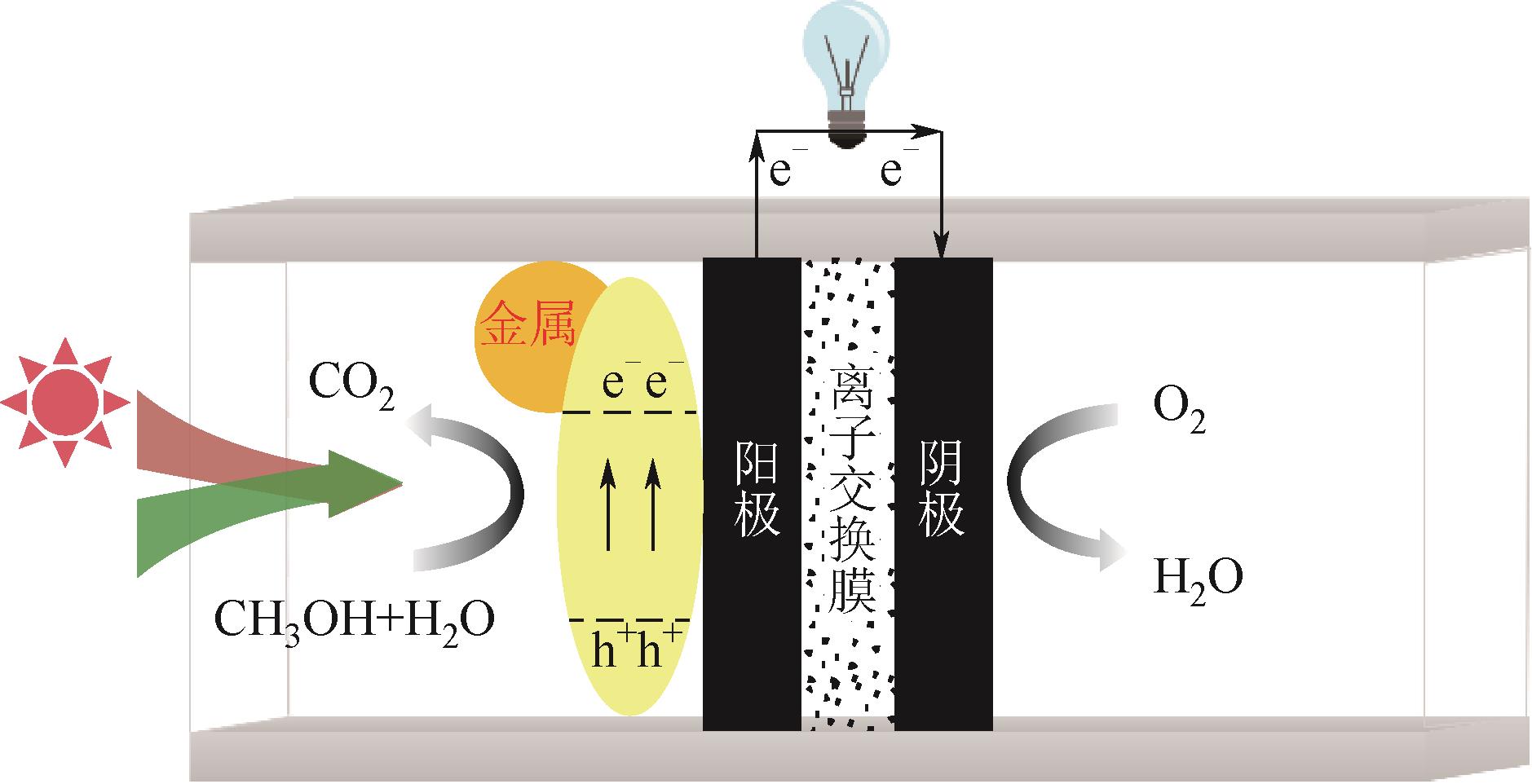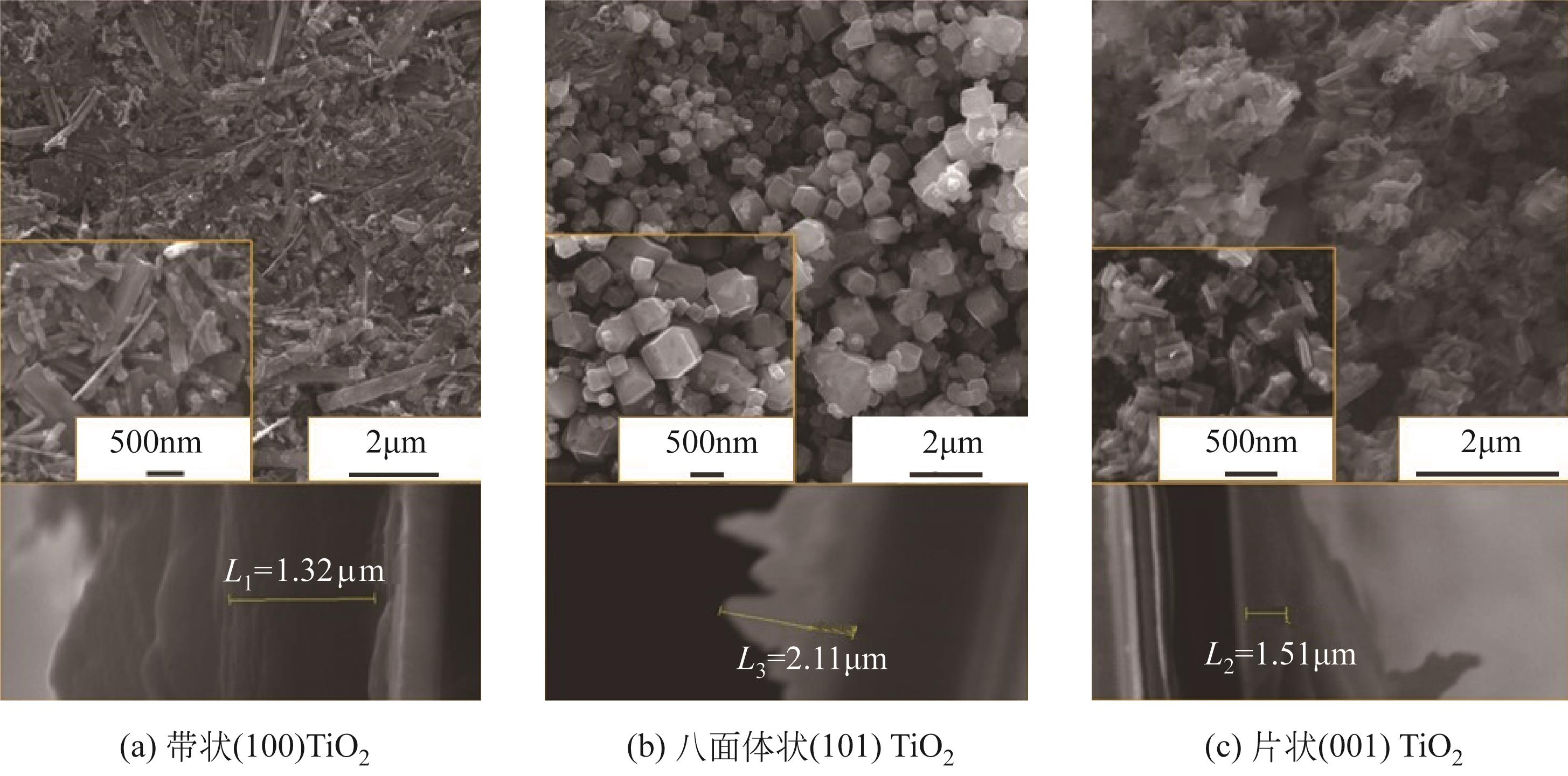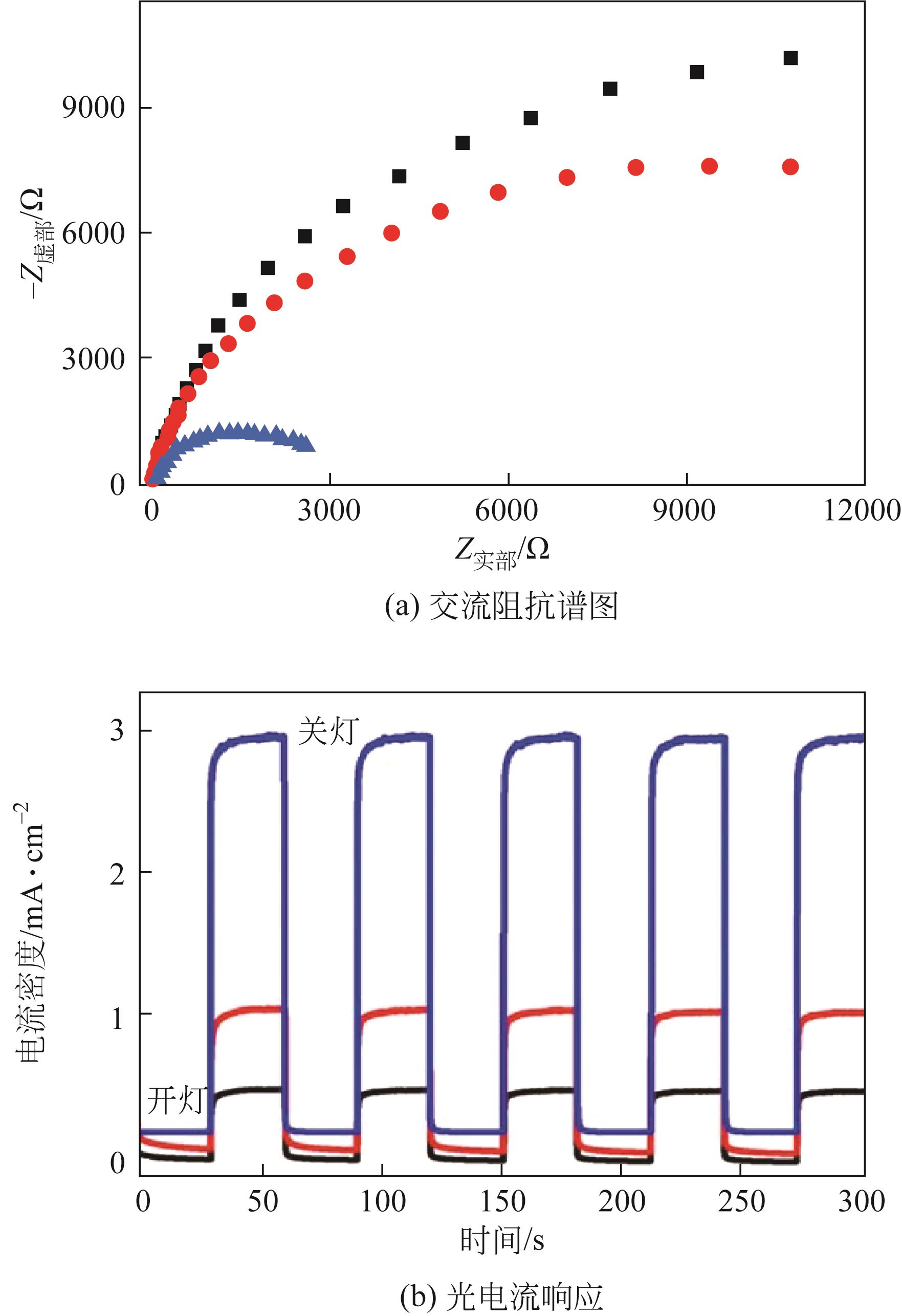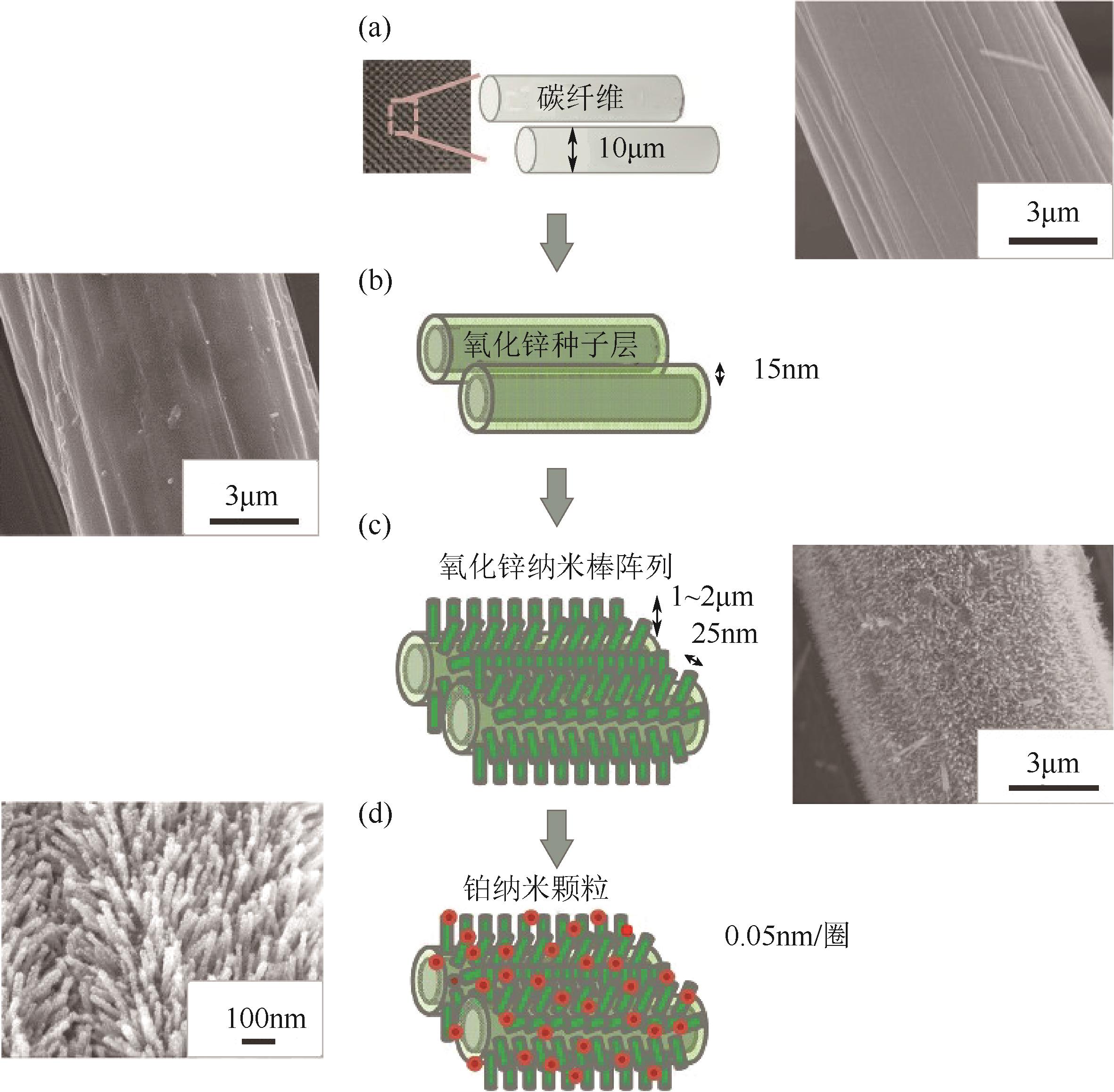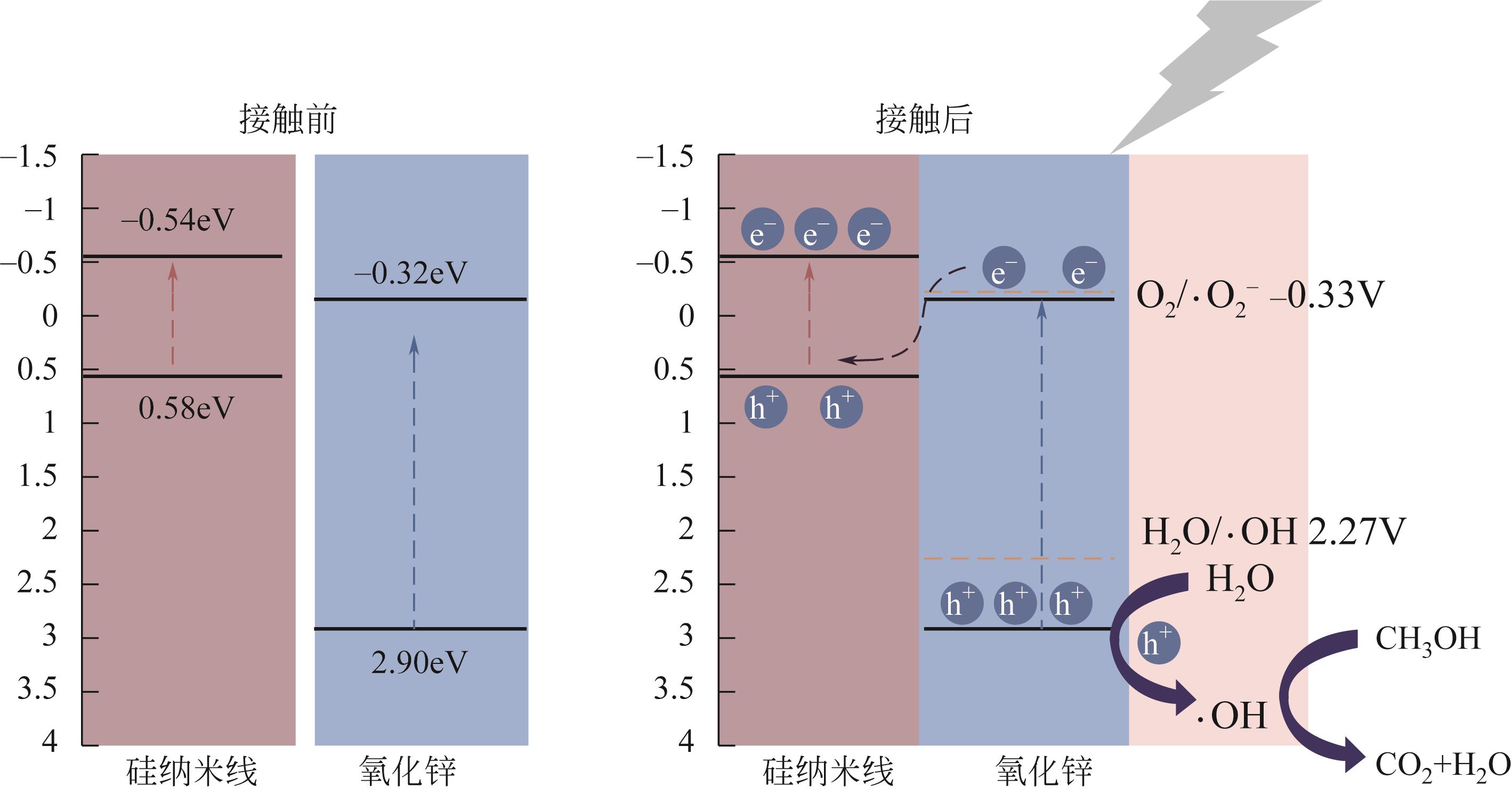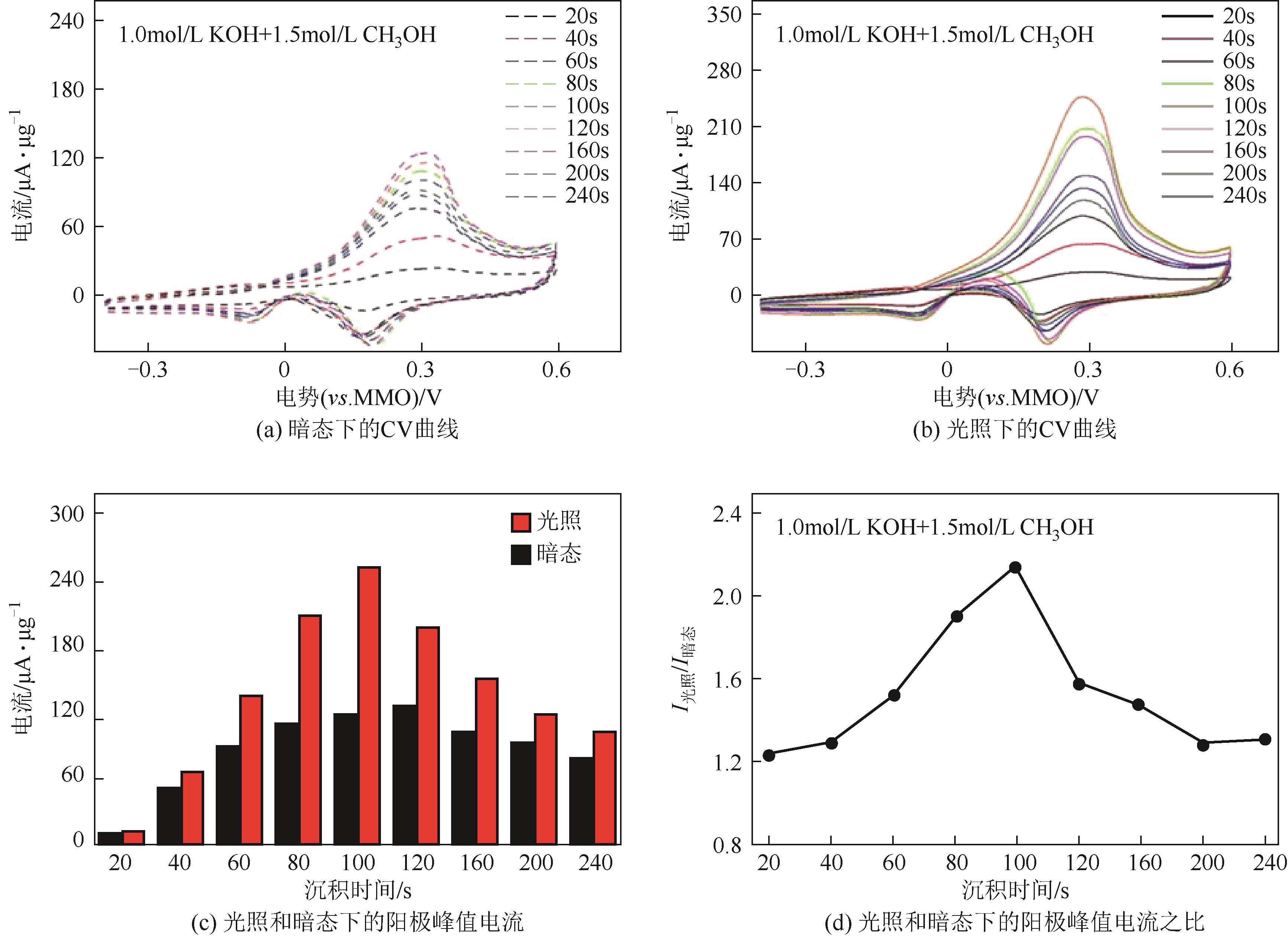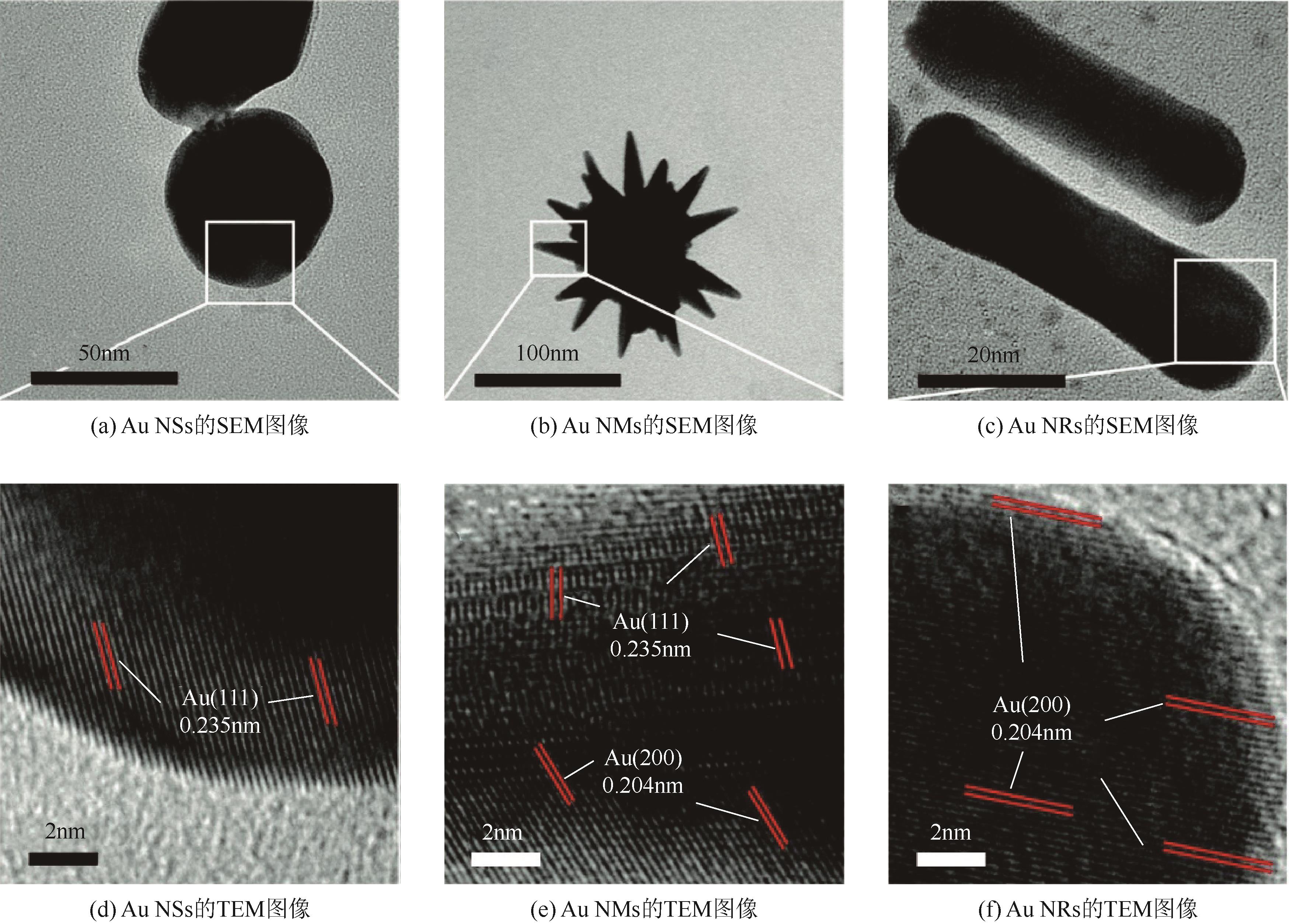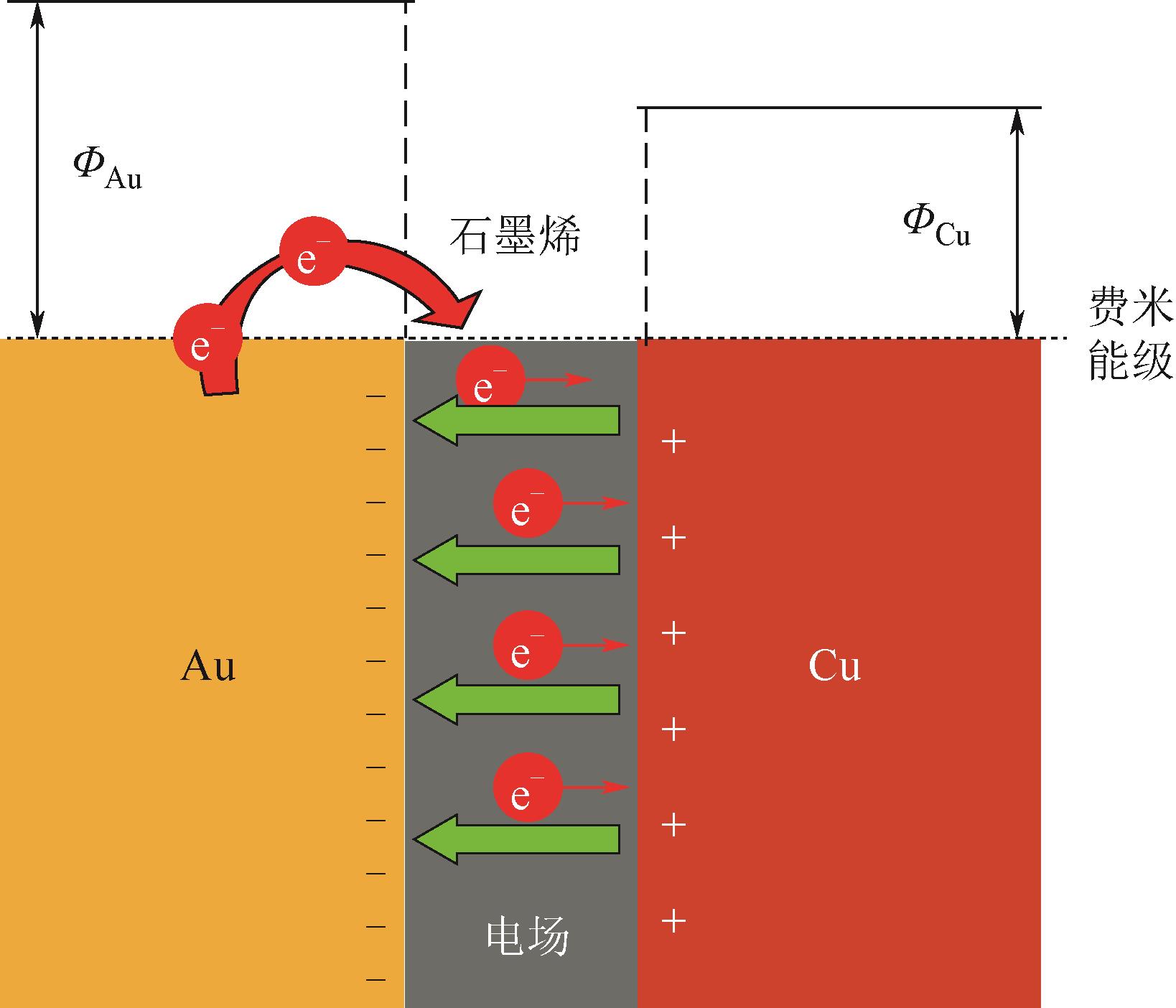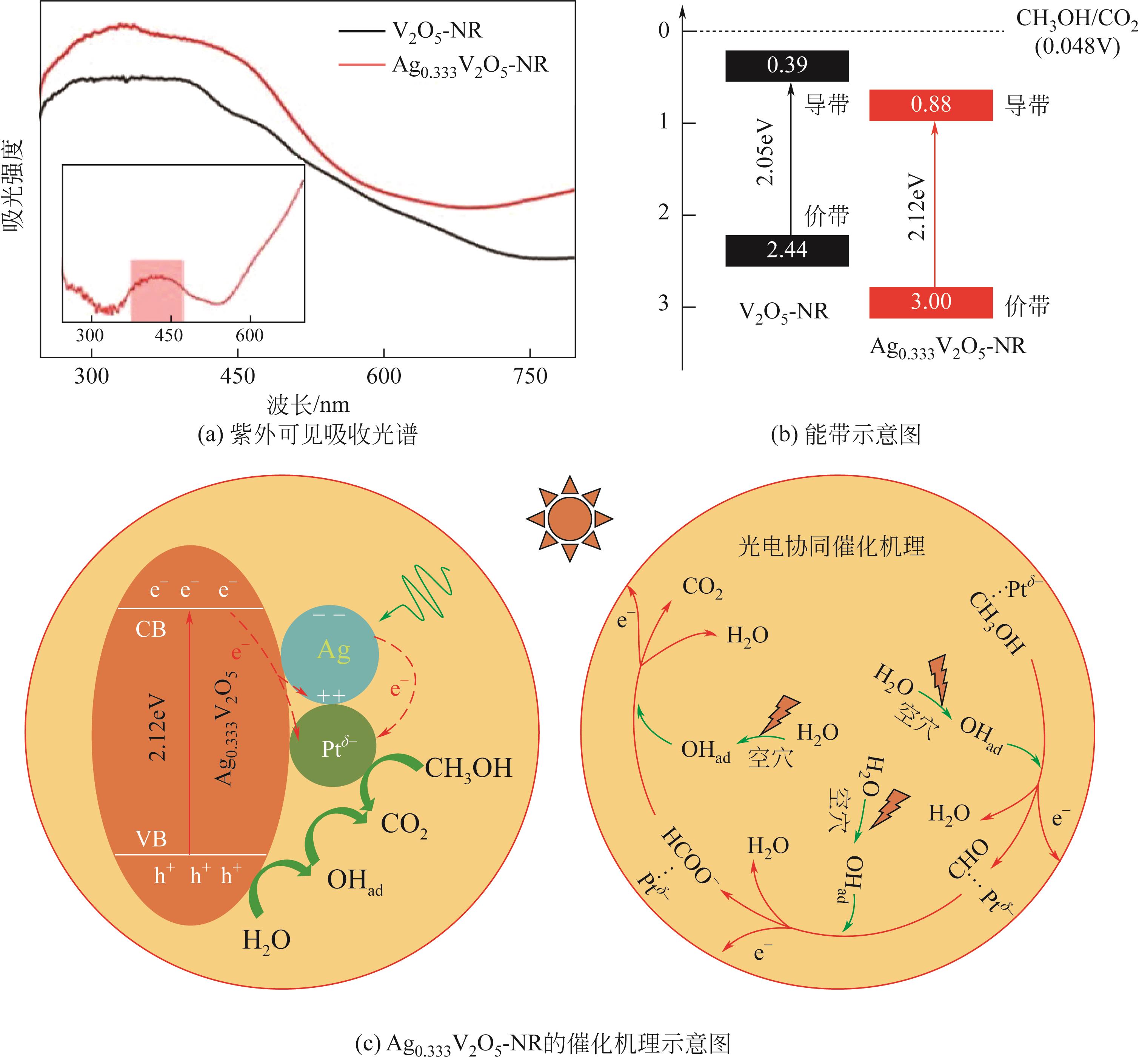| 1 |
赵顺炜, 王耀琼, 高焕方, 等. 金属化合物作直接甲醇燃料电池阳极催化剂载体的研究进展[J]. 化工进展, 2017, 36(3):965-972.
|
|
ZHAO Shunwei, WANG Yaoqiong, GAO Huanfang, et al. Resent progress in metal compound supports of anode catalyst for direct methanol fuel cell[J]. Chemical Industry and Engineering Progress, 2017, 36(3): 965-972.
|
| 2 |
WANG Jianmei, ZHANG Bingxing, GUO Wei, et al. Toward electrocatalytic methanol oxidation reaction: Longstanding debates and emerging catalysts[J]. Advanced Materials, 2023, 35(26): e2211099.
|
| 3 |
丁鑫, 张栋铭, 焦纬洲, 等. 直接甲醇燃料电池阳极催化剂研究进展[J]. 化工进展, 2021, 40(9): 4918-4930.
|
|
DING Xin, ZHANG Dongming, JIAO Weizhou, et al. Research progress of anode catalysts for direct methanol fuel cells[J]. Chemical Industry and Engineering Progress, 2021, 40(9): 4918-4930.
|
| 4 |
GONG Liyuan, YANG Zhiyuan, LI Kui, et al. Recent development of methanol electrooxidation catalysts for direct methanol fuel cell[J]. Journal of Energy Chemistry, 2018, 27(6): 1618-1628.
|
| 5 |
TIAN Hao, YU Yanhui, WANG Qian, et al. Recent advances in two-dimensional Pt based electrocatalysts for methanol oxidation reaction[J]. International Journal of Hydrogen Energy, 2021, 46(61): 31202-31215.
|
| 6 |
ANTOLINI Ermete. Photo-assisted methanol oxidation on Pt-TiO2 catalysts for direct methanol fuel cells: A short review[J]. Applied Catalysis B: Environmental, 2018, 237: 491-503.
|
| 7 |
DREW Kristine, GIRISHKUMAR G, VINODGOPAL K, et al. Boosting fuel cell performance with a semiconductor photocatalyst: TiO2/Pt-Ru hybrid catalyst for methanol oxidation[J]. The Journal of Physical Chemistry B, 2005, 109(24): 11851-11857.
|
| 8 |
HOSSEINI Mir Ghasem, MOMENI Mohamad Mohsen. UV-cleaning properties of Pt nanoparticle-decorated titania nanotubes in the electro-oxidation of methanol: An anti-poisoning and refreshable electrode[J]. Electrochimica Acta, 2012, 70: 1-9.
|
| 9 |
HOSSEINI Mir Ghasem, MOMENI Mohamad Mohsen. Evaluation of the performance of platinum nanoparticle-titanium oxide nanotubes as a new refreshable electrode for formic acid electro-oxidation[J]. Fuel Cells, 2012, 12(3): 406-414.
|
| 10 |
AHMED Amira Y, KANDIEL Tarek A, IVANOVA Irina, et al. Photocatalytic and photoelectrochemical oxidation mechanisms of methanol on TiO2 in aqueous solution[J]. Applied Surface Science, 2014, 319: 44-49.
|
| 11 |
LIN Chunting, HUANG Hung Ji, YANG Jr-Jung, et al. A simple fabrication process of Pt-TiO2 hybrid electrode for photo-assisted methanol fuel cells[J]. Microelectronic Engineering, 2011, 88(8): 2644-2646.
|
| 12 |
BORA Anindita, MOHAN Kiranjyoti, DOLEY Simanta, et al. Broadening the sunlight response region with carbon dot sensitized TiO2 as a support for a Pt catalyst in the methanol oxidation reaction[J]. Catalysis Science & Technology, 2018, 8(16): 4180-4192.
|
| 13 |
POLO André S, SANTOS M C, DE SOUZA Rodrigo F B, et al. Pt-Ru-TiO2 photoelectrocatalysts for methanol oxidation[J]. Journal of Power Sources, 2011, 196(2): 872-876.
|
| 14 |
IVANOV Svetlozar, MINTSOULI Ioanna, GEORGIEVA Jenia, et al. Platinized titanium dioxide electrodes for methanol oxidation and photo-oxidation[J]. Journal of Electrochemical Science and Engineering, 2012, 2(4): 155-169.
|
| 15 |
LI Xinyuan, WANG Guowen, JING Lin, et al. A photoelectrochemical methanol fuel cell based on aligned TiO2 nanorods decorated graphene photoanode[J]. Chemical Communications, 2016, 52(12): 2533-2536.
|
| 16 |
HU Sujuan, WANG Baoling, JU Haidong, et al. Photo-assisted electrocatalytic methanol oxidation based on an efficient 1D-TiO2 nanorods arrays support electrode[J]. Journal of the Taiwan Institute of Chemical Engineers, 2017, 80: 533-539.
|
| 17 |
WANG Y Q, WEI Z D, GAO B, et al. The electrochemical oxidation of methanol on a Pt/TNTs/Ti electrode enhanced by illumination[J]. Journal of Power Sources, 2011, 196(3): 1132-1135.
|
| 18 |
HE Huichao, XIAO Peng, ZHOU Ming, et al. Preparation of well-distributed Pt-Ni nanoparticles on/into TiO2NTs by pulse electrodeposition for methanol photoelectro-oxidation[J]. Catalysis Communications, 2011, 16(1): 140-143.
|
| 19 |
HE Huichao, XIAO Peng, ZHOU Ming, et al. PtNi alloy nanoparticles supported on carbon-doped TiO2 nanotube arrays for photo-assisted methanol oxidation[J]. Electrochimica Acta, 2013, 88: 782-789.
|
| 20 |
ZHANG Jianbo, SU Nan, HU Xiulan, et al. Facile synthesis of Pt nanoparticles supported on anatase TiO2 nanotubes with good photo-electrocatalysis performance for methanol[J]. RSC Advances, 2017, 7(89): 56194-56203.
|
| 21 |
ZHAI Chunyang, ZHU Mingshan, Duan BIN, et al. Visible-light-assisted electrocatalytic oxidation of methanol using reduced graphene oxide modified Pt nanoflowers-TiO2 nanotube arrays[J]. ACS Applied Materials & Interfaces, 2014, 6(20): 17753-17761.
|
| 22 |
YE Lingting, LI Zhongshui, ZHANG Lian, et al. A green one-pot synthesis of Pt/TiO2/Graphene composites and its electro-photo-synergistic catalytic properties for methanol oxidation[J]. Journal of Colloid and Interface Science, 2014, 433: 156-162.
|
| 23 |
WANG Caiqin, JIANG Fengxing, YUE Ruirui, et al. Enhanced photo-electrocatalytic performance of Pt/RGO/TiO2 on carbon fiber towards methanol oxidation in alkaline media[J]. Journal of Solid State Electrochemistry, 2014, 18(2): 515-522.
|
| 24 |
ODETOLA Christopher, TREVANI Liliana N, EASTON E Bradley. Photo enhanced methanol electrooxidation: Further insights into Pt and TiO2 nanoparticle contributions[J]. Applied Catalysis B: Environmental, 2017, 210: 263-275.
|
| 25 |
ZHANG Jianbo, HU Xiulan, ZHU Faquan, et al. Simple synthesized Pt/GNs/TiO2 with good mass activity and stability for methanol oxidation[J]. Nanotechnology, 2017, 28(50): 505603.
|
| 26 |
MOHAMED Mohamed Mokhtar, Salah EID, EL-ETRE A Y. Methanol photo-oxidation at graphene and carbon nanotubes modified TiO2 nanosheets electrocatalysts[J]. Journal of Photochemistry and Photobiology A: Chemistry, 2017, 338: 37-48.
|
| 27 |
LI Wei, BAI Yang, LI Fujun, et al. Core-shell TiO2/C nanofibers as supports for electrocatalytic and synergistic photoelectrocatalytic oxidation of methanol[J]. Journal of Materials Chemistry, 2012, 22(9): 4025-4031.
|
| 28 |
FAN X L, ZHANG C X, XUE H R, et al. Fabrication of SiO2 incorporated ordered mesoporous TiO2 composite films as functional Pt supports for photo-electrocatalytic methanol oxidation[J]. RSC Advances, 2015, 5(96): 78880-78888.
|
| 29 |
SUN Yue, ZHOU Yunjie, LIU Yan, et al. A photoactive process cascaded electrocatalysis for enhanced methanol oxidation over Pt-MXene-TiO2 composite[J]. Nano Research, 2020, 13(10): 2683-2690.
|
| 30 |
MIKRUT Paweł, KOBIELUSZ Marcin, MACYK Wojciech. Spectroelectrochemical characterization of euhedral anatase TiO2 crystals-implications for photoelectrochemical and photocatalytic properties of {001} {100} and {101} facets[J]. Electrochimica Acta, 2019, 310: 256-265.
|
| 31 |
MIKRUT Paweł, MITORAJ Dariusz, BERANEK Radim, et al. Facet-dependent activity of tailored anatase TiO2 crystals in photoanodes for photocatalytic fuel cells[J]. Applied Surface Science, 2021, 566: 150662.
|
| 32 |
PLAÇA L F, VITAL P S, GOMES L E, et al. Black TiO2 photoanodes for direct methanol photo fuel cells[J]. ACS Applied Materials & Interfaces, 2023, 15(37): 43259-43271.
|
| 33 |
YU Yingjian, YANG Jiangxia, WANG Xianlu, et al. Atomic Fe sites doped two-dimensional (001) TiO2 nanosheets as an effective photo-response support in methanol electro-oxidation[J]. Surfaces and Interfaces, 2021, 25: 101231.
|
| 34 |
KHAN Mohammad Ehtisham, MOHAMMAD Akbar, YOON Taeho. State-of-the-art developments in carbon quantum dots (CQDs): Photo-catalysis, bio-imaging, and bio-sensing applications[J]. Chemosphere, 2022, 302: 134815.
|
| 35 |
Jae-Kyung OH, LEE Young-Woo, PARK Kyung-Won. Improved photo-catalytic activity of single-crystalline TiO2 nanowires surrounded by Pt cube nanoparticles[J]. Journal of Industrial and Engineering Chemistry, 2013, 19(4): 1391-1394.
|
| 36 |
GRASSER Jordan A, STOVER Benjamin K, MUGGLI Darrin S. Synthesis factors that impact TiO2 nanotube activity during gas-phase photocatalytic oxidation of methanol[J]. Chemical Engineering Communications, 2013, 200(3): 337-350.
|
| 37 |
DÍAZ-REAL J A, DUBED-BANDOMO G C, GALINDO-DE-LA-ROSA J, et al. Evaluation of transferable TiO2 nanotube membranes as electrocatalyst support for methanol photoelectrooxidation[J]. Applied Catalysis B: Environmental, 2018, 222: 18-25.
|
| 38 |
ADÁN C, MARUGÁN J, SÁNCHEZ E, et al. Understanding the effect of morphology on the photocatalytic activity of TiO2 nanotube array electrodes[J]. Electrochimica Acta, 2016, 191: 521-529.
|
| 39 |
MENA Esperanza, MARTÍN DE VIDALES María José, MESONES Sandra, et al. Influence of anodization mode on the morphology and photocatalytic activity of TiO2-NTs array large size electrodes[J]. Catalysis Today, 2018, 313: 33-39.
|
| 40 |
TANG H, PRASAD K, SANJINÈS R, et al. Electrical and optical properties of TiO2 anatase thin films[J]. Journal of Applied Physics, 1994, 75(4): 2042-2047.
|
| 41 |
AHMAD Haslina, KAMARUDIN Siti Kartom, MINGGU Lorna Jeffery, et al. Enhancing methanol oxidation with a TiO2-modified semiconductor as a photo-catalyst[J]. International Journal of Hydrogen Energy, 2017, 42(14): 8986-8996.
|
| 42 |
ÖZGÜR Ü, ALIVOV Ya I, LIU C, et al. A comprehensive review of ZnO materials and devices[J]. Journal of Applied Physics, 2005, 98(4): 41301-41301-103.
|
| 43 |
Agnieszka KOŁODZIEJCZAK-RADZIMSKA, JESIONOWSKI Teofil. Zinc oxide-from synthesis to application: A review[J]. Materials, 2014, 7(4): 2833-2881.
|
| 44 |
SU Chung-Yi, HSUEH Yang-Chih, Chi-Chung KEI, et al. Fabrication of high-activity hybrid Pt@ZnO catalyst on carbon cloth by atomic layer deposition for photoassisted electro-oxidation of methanol[J]. The Journal of Physical Chemistry C, 2013, 117(22): 11610-11618.
|
| 45 |
HU Xiulan, GE Chao, SU Nan, et al. Solution plasma synthesis of Pt/ZnO/KB for photo-assisted electro-oxidation of methanol[J]. Journal of Alloys and Compounds, 2017, 692: 848-854.
|
| 46 |
KANTI BERA Kamal, CHAKRABORTY Malay, KANTI BERA Shyamal, et al. Synthesis of different Pt-ZnO binary composites for synergistic photo-electrocatalytic oxidation of methanol in alkali[J]. ChemistrySelect, 2021, 6(25): 6586-6596.
|
| 47 |
LI Zhongshui, YE Lingting, LEI Fengling, et al. Enhanced electro-photo synergistic catalysis of Pt (Pd)/ZnO/graphene composite for methanol oxidation under visible light irradiation[J]. Electrochimica Acta, 2016, 188: 450-460.
|
| 48 |
GEORGIEVA J, SOTIROPOULOS S, VALOVA E, et al. Methanol oxidation and photo-oxidation at Pt/WO3 electrocatalysts on graphite substrates[J]. Journal of Electroanalytical Chemistry, 2014, 727: 135-140.
|
| 49 |
HU Sujuan, JIANG Lei, WANG Baoling, et al. Enhanced electrocatalytic methanol oxidation properties by photo-assisted Fe2O3 nanoplates[J]. International Journal of Hydrogen Energy, 2019, 44(26): 13214-13220.
|
| 50 |
YE Lingting, LI Zhongshui, ZHANG Xiaofeng, et al. One-step microwave synthesis of Pt (Pd)/Cu2O/GNs composites and their electro-photo-synergistic catalytic properties for methanol oxidation[J]. Journal of Materials Chemistry A, 2014, 2(48): 21010-21019.
|
| 51 |
LEI Fengling, LI Zhongshui, YE Lingting, et al. One-pot synthesis of Pt/SnO2/GNs and its electro-photo-synergistic catalysis for methanol oxidation[J]. International Journal of Hydrogen Energy, 2016, 41(1): 255-264.
|
| 52 |
YANG Bingqian, YU Yawei, ZHANG Jianbo, et al. Facile synthesis of PtPd/SnO2 nanocatalysts with good photo-electrocatalytic property[J]. Applied Surface Science, 2019, 471(31): 263-272.
|
| 53 |
GAO Haifeng, YUAN Chen, HE Zhilong, et al. Enhanced electrocatalytic oxidation of methanol on Pt-decorated Bi2WO6/graphene nanosheets with visible light assistance[J]. Energy Technology, 2020, 8(9): 2000210.
|
| 54 |
ZHENG Huajun, NIU Ping, ZHAO Zhefei. Carbon quantum dot sensitized Pt@Bi2WO6/FTO electrodes for enhanced photoelectro-catalytic activity of methanol oxidation[J]. RSC Advances, 2017, 7(43): 26943-26951.
|
| 55 |
HU Sujuan, JIANG Lei, TU Yujiao, et al. An efficient photo-assisted BiOBr nanoplates support for electrocatalyst for methanol oxidation[J]. Journal of the Taiwan Institute of Chemical Engineers, 2018, 86: 113-119.
|
| 56 |
ZHU Mingshan, ZHAI Chunyang, SUN Mingjuan, et al. Ultrathin graphitic C3N4 nanosheet as a promising visible-light-activated support for boosting photoelectrocatalytic methanol oxidation[J]. Applied Catalysis B: Environmental, 2017, 203: 108-115.
|
| 57 |
CHENG Jiexu, HU Xiulan, ZHANG Jianbo, et al. Fabrication of a composite of platinum, N-g-C3N4 and Ketjen Black for photo-electrochemical methanol oxidation[J]. Journal of Materials Science, 2017, 52(14): 8444-8454.
|
| 58 |
XU Zhaofen, HU Jiayue, DONG Haojie, et al. Near-infrared light-assisted methanol oxidation reaction over the ferrous phosphide[J]. Journal of Colloid and Interface Science, 2022, 626: 599-607.
|
| 59 |
ZHAI Chunyang, ZHU Mingshan, PANG Fenzhi, et al. High efficiency photoelectrocatalytic methanol oxidation on CdS quantum dots sensitized Pt electrode[J]. ACS Applied Materials & Interfaces, 2016, 8(9): 5972-5980.
|
| 60 |
DALAPATI Goutam Kumar, SHARMA Himani, GUCHHAIT Asim, et al. Tin oxide for optoelectronic, photovoltaic and energy storage devices: A review[J]. Journal of Materials Chemistry A, 2021, 9(31): 16621-16684.
|
| 61 |
KULESZA Pawel J, FAULKNER Larry R. Electrocatalytic properties of bifunctional Pt/W(Ⅵ, Ⅴ) oxide microstructures electrodeposited on carbon substrates[J]. Journal of Electroanalytical Chemistry and Interfacial Electrochemistry, 1989, 259(1/2): 81-98.
|
| 62 |
TSEUNG A C C, CHEN K Y. Hydrogen spill-over effect on Pt/WO3 anode catalysts[J]. Catalysis Today, 1997, 38(4): 439-443.
|
| 63 |
孙凌波, 胡明忠, 梁明明, 等. 铋系半导体光催化剂研究进展[J]. 化工进展, 2022, 41(9): 4813-4830.
|
|
SUN Lingbo, HU Mingzhong, LIANG Mingming, et al. Research progress of bismuth-based semiconductor photocatalysts[J]. Chemical Industry and Engineering Progress, 2022, 41(9): 4813-4830.
|
| 64 |
VINODGOPAL K, KAMAT P V. Enhanced rates of photocatalytic degradation of an azo dye using SnO2/TiO2 coupled semiconductor thin films[J]. Environmental Science & Technology, 1995, 29(3): 841-845.
|
| 65 |
RANJIT K T, Synthesis VISWANATHAN B., characterization and photocatalytic properties of iron-doped TiO 2 catalysts[J]. Journal of Photochemistry and Photobiology A: Chemistry, 1997, 108(1): 79-84.
|
| 66 |
HE Huichao, XIAO Peng, ZHOU Ming, et al. Boosting catalytic activity with a p-n junction: Ni/TiO2 nanotube arrays composite catalyst for methanol oxidation[J]. International Journal of Hydrogen Energy, 2012, 37(6): 4967-4973.
|
| 67 |
SUN Mingjuan, HU Jiayue, ZHAI Chunyang, et al. A p-n heterojunction of CuI/TiO2 with enhanced photoelectrocatalytic activity for methanol electro-oxidation[J]. Electrochimica Acta, 2017, 245: 863-871.
|
| 68 |
WANG Tao, TANG Jing, WU Shichao, et al. Preparation of ordered mesoporous WO3-TiO2 films and their performance as functional Pt supports for synergistic photo-electrocatalytic methanol oxidation[J]. Journal of Power Sources, 2014, 248: 510-516.
|
| 69 |
BLASKIEVICZ S F, SANTOS H L S, TEIXEIRA I F, et al. Nickel-modified polymeric carbon nitride for improving TiO2-based photoanode: Photoelectrocatalytical evaluation and mechanistical insights[J]. Materials Today Nano, 2022, 18: 100192.
|
| 70 |
ZHAI Chunyang, SUN Mingjuan, ZHU Mingshan, et al. Insights into photo-activated electrode for boosting electrocatalytic methanol oxidation based on ultrathin MoS2 nanosheets enwrapped CdS nanowires[J]. International Journal of Hydrogen Energy, 2017, 42(8): 5006-5015.
|
| 71 |
HU Jiayue, YU Chaokai, ZHAI Chunyang, et al. 2D/1D heterostructure of g-C3N4 nanosheets/CdS nanowires as effective photo-activated support for photoelectrocatalytic oxidation of methanol[J]. Catalysis Today, 2018, 315: 36-45.
|
| 72 |
ZHANG Hongmin, HE Jie, ZHAI Chunyang, et al. 2D Bi2WO6/MoS2 as a new photo-activated carrier for boosting electrocatalytic methanol oxidation with visible light illumination[J]. Chinese Chemical Letters, 2019, 30(12): 2338-2342.
|
| 73 |
YUAN Chen, GAO Haifeng, XU Qiyan, et al. Pt decorated 2D/3D heterostructure of Bi2WO6 nanosheet/Cu2S snowflake for improving electrocatalytic methanol oxidation with visible-light assistance[J]. Applied Surface Science, 2020, 521: 146431.
|
| 74 |
ZHANG Hongmin, ZHAI Chunyang, YANG Peizhou, et al. In situ growth of BiOI/MoS2 heterostructure as Pt supports for visible light-assisted electrocatalytic methanol oxidation reaction[J]. Energy Technology, 2020, 8(1): 1900731.
|
| 75 |
WANG Gong, XIE Xingming, CUI Xuejing, et al. Photoinduced Pt/BiVO4/Bi2O3 heterostructures for methanol oxidation and new insights on the photo-/electrocatalysis coupling mechanism[J]. ACS Sustainable Chemistry & Engineering, 2021, 9(11): 4271-4281.
|
| 76 |
WANG Feng, WU Lisha, QIAN Lei, et al. Noble metal-free CoS x /NiS x heterojunction for photo-assisted methanol electrooxidation[J]. ChemElectroChem, 2022, 9(19): e202200909.
|
| 77 |
XIE Dongxue, HU Sujuan, TENG Daihui, et al. Non-noble Si NWs@ZnO core-shell heterojunction anode enables a photo-assisted mirco direct methanol fuel cell[J]. Chemical Engineering Journal, 2023, 457: 141310.
|
| 78 |
Jingxiang LOW, YU Jiaguo, JARONIEC Mietek, et al. Heterojunction photocatalysts[J]. Advanced Materials, 2017, 29(20): 1601694.
|
| 79 |
MI Yang, WENG Yuxiang. Band alignment and controllable electron migration between rutile and anatase TiO2 [J]. Scientific Reports, 2015, 5: 11482.
|
| 80 |
BARD Allen J. Photoelectrochemistry and heterogeneous photo-catalysis at semiconductors[J]. Journal of Photochemistry, 1979, 10(1): 59-75.
|
| 81 |
YU Jiaguo, WANG Shuhan, Jingxiang LOW, et al. Enhanced photocatalytic performance of direct Z-scheme g-C3N4-TiO2 photocatalysts for the decomposition of formaldehyde in air[J]. Physical Chemistry Chemical Physics: PCCP, 2013, 15(39): 16883-16890.
|
| 82 |
YANG Minquan, XU Yijun, LU Wanheng, et al. Self-surface charge exfoliation and electrostatically coordinated 2D hetero-layered hybrids[J]. Nature Communications, 2017, 8: 14224.
|
| 83 |
WANG Xuehua, WANG Xianghu, HUANG Jianfeng, et al. Interfacial chemical bond and internal electric field modulated Z-scheme Sv-ZnIn2S4/MoSe2 photocatalyst for efficient hydrogen evolution[J]. Nature Communications, 2021, 12: 4112.
|
| 84 |
LIU Yaxing, CHEN Fuyi, WANG Qiao, et al. Surface plasmon-enhanced activity and stability for methanol oxidation on gold caviar-like assembly under solar light[J]. Journal of Materials Chemistry A, 2018, 6(22): 10515-10524.
|
| 85 |
SUI Ning, GAO Hongxu, ZHU Jiacheng, et al. Shape- and size-dependences of gold nanostructures on the electrooxidation of methanol under visible light irradiation[J]. Nanoscale, 2019, 11(39): 18320-18328.
|
| 86 |
WANG Zhili, DU Jing, ZHANG Yongzheng, et al. Free-standing nanoporous gold for direct plasmon enhanced electro-oxidation of alcohol molecules[J]. Nano Energy, 2019, 56: 286-293.
|
| 87 |
CHEN Guanying, SUN Mingjuan, LI Juan, et al. Plasmonic hot electron transfer in anisotropic Pt-Au nanodisks boosts electrochemical reactions in the visible-NIR region[J]. Nanoscale, 2019, 11(40): 18874-18880.[PubMed]
|
| 88 |
WEI Yan, ZHANG Xiao, LIU Zhiguo, et al. Site-selective modification of AgPt on multibranched Au nanostars for plasmon-enhanced hydrogen evolution and methanol oxidation reaction in visible to near-infrared region[J]. Journal of Power Sources, 2019, 425: 17-26.
|
| 89 |
WEI Yan, ZHANG Xiao, LIU Yingjie, et al. Ternary PtNiCu self-assembled nanocubes for plasmon-enhanced electrocatalytic hydrogen evolution and methanol oxidation reaction in visible light[J]. Electrochimica Acta, 2020, 349: 136366.
|
| 90 |
XU Shuhong, YE Lingting, LI Zhongshui, et al. Facile synthesis of bimetallic Pt-Ag/graphene composite and its electro-photo-synergistic catalytic properties for methanol oxidation[J]. Catalysts, 2016, 6(9): 144.
|
| 91 |
LIU Yaxing, CHEN Fuyi, WANG Qiao, et al. Plasmonic-enhanced catalytic activity of methanol oxidation on Au-graphene-Cu nanosandwiches[J]. Nanoscale, 2019, 11(18): 8812-8824.
|
| 92 |
YE Yixiang, WANG Yanli, LI Zhongshui, et al. One-pot synthesis of PtIn/3D-GNs composites with high alloying degree for electro-photo synergistic catalysis[J]. New Journal of Chemistry, 2019, 43(43): 17023-17032.
|
| 93 |
SHIAO Ming-Hua, LIN Chunting, HUANG Hung Ji, et al. Novel gold dendritic nanoflowers deposited on titanium nitride for photoelectrochemical cells[J]. Journal of Solid State Electrochemistry, 2018, 22(10): 3077-3084.
|
| 94 |
Su Pei LIM, PANDIKUMAR Alagarsamy, HUANG Nay Ming, et al. Silver/titania nanocomposite-modified photoelectrodes for photoelectrocatalytic methanol oxidation[J]. International Journal of Hydrogen Energy, 2014, 39(27): 14720-14729.
|
| 95 |
XIONG Yunjie, ZOU Liangliang, PAN Qingguang, et al. Photo-electro synergistic catalysis: Can Pd be active for methanol electrooxidation in acidic medium?[J]. Electrochimica Acta, 2018, 278: 210-218.
|
| 96 |
LI Pingping, WANG Jinshu, ZU Guannan, et al. Synergetic catalytic properties of gold nanoparticles planted on transparent titanium dioxide nanotube array bed[J]. Materials Chemistry and Physics, 2018, 217: 437-444.
|
| 97 |
XIE Xingming, FENG Jianguang, CUI Xuejing, et al. Plasmon-enhanced photocatalysis coupling electrocatalysis steering methanol oxidation toward a CO-free dominant pathway[J]. ACS Catalysis, 2021, 11(21): 13160-13168.
|
| 98 |
Lance KELLY K, CORONADO Eduardo, ZHAO Lin lin, et al. The optical properties of metal nanoparticles: The influence of size, shape, and dielectric environment[J]. The Journal of Physical Chemistry B, 2003, 107(3): 668-677.
|
| 99 |
ATWATER Harry A, POLMAN Albert. Plasmonics for improved photovoltaic devices[J]. Nature Materials, 2010, 9(3): 205-213.
|
| 100 |
周利, 王取泉. 等离激元共振能量转移与增强光催化研究进展[J]. 物理学报, 2019, 68(14): 118-132.
|
|
ZHOU Li, WANG Ququan. Plasmon resonance energy transfer and research progress in plasmon-enhanced photocatalysis[J]. Acta Physica Sinica, 2019, 68(14): 118-132.
|
 ), LIU Lei2, GAO Zhihua1,2,3, HUANG Wei1,2,3, ZUO Zhijun1,2,3(
), LIU Lei2, GAO Zhihua1,2,3, HUANG Wei1,2,3, ZUO Zhijun1,2,3( )
)
 ), 刘雷2, 高志华1,2,3, 黄伟1,2,3, 左志军1,2,3(
), 刘雷2, 高志华1,2,3, 黄伟1,2,3, 左志军1,2,3( )
)
